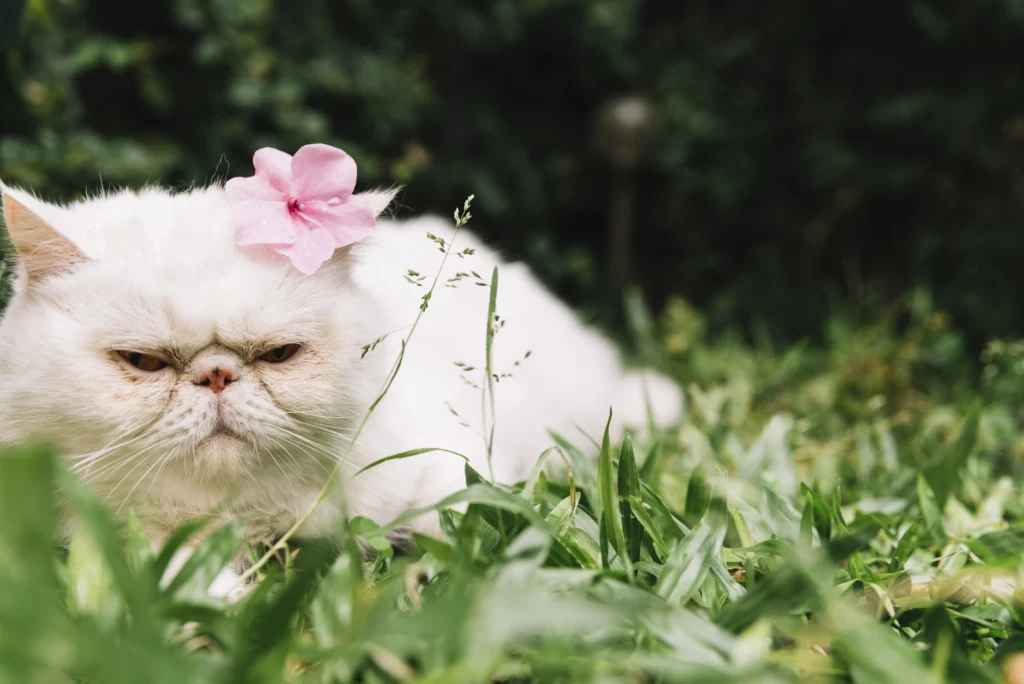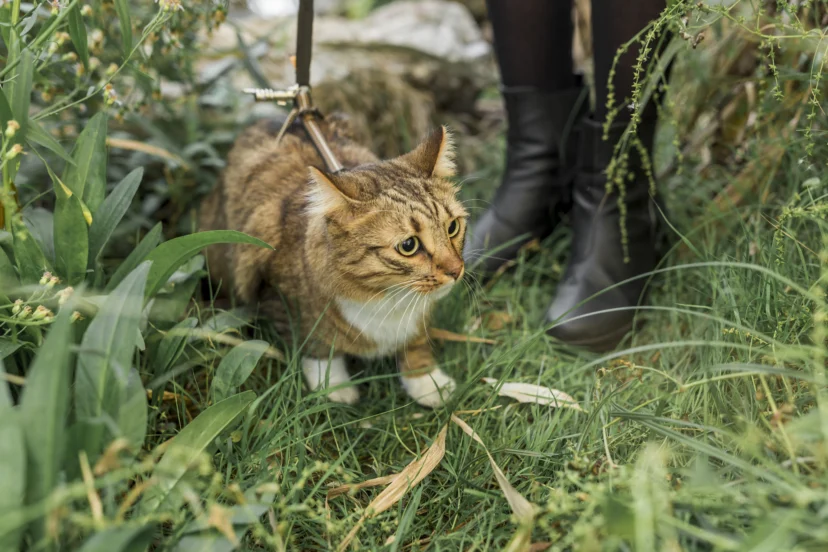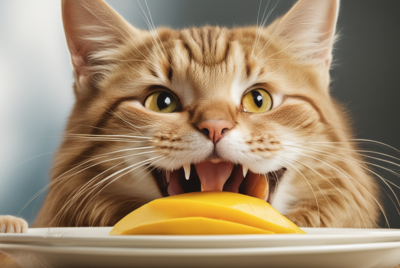Are Ferns Toxic To Cats? | Possible Risks Ferns Post To Cats
Do you have an exploring fur baby, indoor or outdoor, who loves looking at your home’s greenery with their curious paws? Ferns, with their lush fronds, are popular houseplants among many pet parents. But can ferns turn into an upset stomach for your feline friend if they munch on them?
The answer depends on the true fern. As caring pet parents, it is essential to know which seemingly ordinary houseplants could cause gastrointestinal upset or be toxic if eaten by curious creatures like cats.
Toxic plants for your furry friend can include a lot of types ranging from fern plants to simple houseplants.
In this article, we will focus on ferns poisonous to cats such as aloe vera plants and lace ferns. Fern poisoning can be easily avoided if you are able to pinpoint poisonous plants like boston ferns, winter ferns and frosty ferns.
Are Ferns Safe For Cats To Eat?
If cats can eat ferns safely, they must tell the difference between real ferns and plants that look like ferns. Most true ferns belong to the Polypodiopsida group and are usually okay for cats if they don’t overeat. But not all ferns are equally safe.
True ferns like the Boston and Staghorn ferns are generally not a significant risk for cats if they don’t overdo it eating them. These ferns don’t have many toxins that would cause a sour stomach if a large amount was ingested.
Plants like asparagus ferns and spider plants only appear to be ferns but have poisons that may cause throwing up or poop issues in cats eating big pieces. Pet parents should avoid these ferns or put them high where kitties can’t reach, hanging in baskets.
Knowing the correct plant name is vital for knowing if a fern is safe or is actually a toxic plant. When cats eat ferns, it is not always dangerous.

Plants Toxic to Cats
Plant poison can cause anything from mild to severe issues in cats and pets. It’s important to know which common houseplants are potentially incredibly toxic.
Besides asparagus fern and spider plants, other plants poisonous to cats include aloe vera and dieffenbachia. Signs of toxicity include vomiting, diarrhea, lethargy, drooling, or foamy spit. Severe cases may damage kidneys or liver without prompt veterinary care, such as intravenous fluids.
An aloe vera plant is also toxic to cats. While aloe gel helps sunburns in people, cats risk issues from aloe sap.
Dieffenbachia contains needle-like calcium oxalate crystals that can cause mouth irritation or swelling if ingested. Even small amounts of some plants can threaten tiny kittens.
Safe Plants For Cats
For cats interested in leafy snacks, consider giving cat-safe choices instead of plants that can harm them. Cat grass is a simple, safe option that satisfies curiosity without danger or upset stomachs.
Peace lilies and money plants are usually not highly toxic. However, it’s still best to monitor cats, as eating large quantities of plants increases the chances of mild toxicity. Money plants contain crystals that can irritate delicate feline mouths.
Matching curious cats with proven non-toxic choices like cat grass, catnip, and philodendrons helps keep furry friends healthy. These allow cats to chew without risks compared to unknown ferns.
Understanding Fern Toxicity
While fern toxicity usually means low danger for cats, understanding the risks helps know what signs to watch for if a cat ingests any part. True ferns like Boston ferns are barely toxic risks in small, occasional amounts. However, swallowing many leaves might cause minor vomiting or loose stools from plant fibers.
Sometimes, minor gastrointestinal upset from real ferns can be managed without veterinary treatment. But worried pet parents may want to check with their vet about their cat’s condition and behavior changes. Observation also aids in identifying early signs of potential poisoning from chance ingestion.
When cats eat ferns, watch out for possible signs and symptoms of poisoning. Toxic plant may pose serious danger or health hazard to your cats.
Popular Ferns and Cat Safety
Some common houseplant ferns are more popular than others. Learning about these helps you judge the risks to feline friends if you choose them as indoor plants.
Boston ferns are cherished for their lush leaves’ low light tolerance indoors. Studies show they present minimum dangers if cats show interest, without known effects from nibbles or small mouthfuls.
Staghorn ferns also pose equally low risks. Researching individual fern species aids in making choices when living with multiple pets.
Proper Fern Placement Prevents Issues
Not just plant choice but where it’s put affects safety. Placing risky ferns unreachable by cats keeps them away, such as:
- Hanging spider plants or asparagus ferns high with heavy hooks
- Attaching ferns to ceiling hooks or rods beyond paw length
- Displaying ferns high on shelves, mantles, or bookcases out of jump reach
- Blocking off ferns with baby gates or door stops during no-watch times
- Closely overseeing interactions if ferns can’t go upstairs
Strategic placement using barriers controls temptation from curious cats. These defenses and substitutes let ferns and felines share space happily.
Plants To Keep From Cats
Some plants risk nibbling cats, but some cause awful poisonings requiring contact bans. Lilies are hugely harmful if a bulb, petal, or pollen is eaten.
Touch leads swiftly to kidney failure from toxic stuff. Through rescue help, 50-70% die from lily poisonings, needing fast vet care. Dieffenbachia also bothers mouth spots, and may need steroid therapy.
Choosing and putting down only proven houseplants stays wise for homes with exploring furry roommates. Strict entry bans match incredibly dangerous lilies, sago palms, and dieffenbachia, no matter what—their dangers are top plant pleasures for furry friends.
Keep Cats Safe From Plants
Knowing how cats act triggers guards, and advice exists for safe plant fun. Cats explore by biting and chewing in their nature. Putting plants on high shelves or hanging baskets stops reach while not capping joyful play.
Providing scratchers, cat trees, engaging toys, and even accepted plants guides natural acts without damage. Watching helps follow plant touches, but not each nibble can cancel. Storing possibly harmful types away builds defenses regarding fur baby instincts and wellness.

Monitor Cat Behavior Around Ferns
While most true ferns pose little risks or minimum threats to nibbling cats, variations compel close checking if furry pals show fern interest. Some things warranting added attention include:
- Excessive chewing of fern fronds beyond investigatory bites
- Swallowing entire leaves or noticeable plant bits
- Repeated licking/mouthing of ferns over many times
- Any vomiting, diarrhea, or eats/drinks changes within a day of fern actions
Addressing worrying behaviors gently through diversion, vet advice, or relocating ferns ensures responsible pet raising. Continued supervision empowers informed choices supporting feline health after plant joy.
Ferns And Cats: Final Thoughts
Homes with ferns and felines can work well with the proper care and choices. While some fern types need entry bans, most real ferns barely risk cats.
As always, thoroughly learning each plant’s poison level aids owners in picking the best plans for their place. Choosing proven safe greenery and keeping iffy types in areas away from curious claws builds a shield that keeps both plants and furry friends well. With careful watching and following nature traits by permitted selections, furry pals and real ferns can coexist inside ferns toxic to cats.
Also read: Are Carnations Toxic to Cats? Don’t Let Beauty Be a Danger




